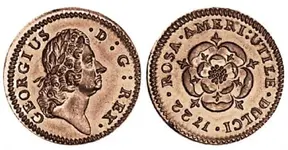This coin was down quite deep. Has condition problems. Appears be copper but more brittle. Looks to be William Woods Rosa Americana Half Penny coin. Circa 1722. Little over 3/4 inches. Does not weigh very much compared to a copper coin of similar size. Barrel Tap was way down, thought it was going to be a ax head, was very surprised what I pulled it out . Small spout, must have been for liqueur or maybe whale oil. Added more information about the barrel tap further down. Some buckle parts. Child's ring with beveled edges and Small bit of Silver leaf showing. This area over looks a small fresh water pond. Not many early homes here on the cape had wells. Soil is all sand.




View attachment 1983976View attachment 1983977
View attachment 1983976View attachment 1983977
Amazon Forum Fav 👍
Attachments
Last edited:
Upvote
21





